State temple of King Indravarman I
The Bakong was build by King Indravarman I, who also build the Preah Ko temple and the huge Indratataka baray, a reservoir where water was stored to be used for irrigation during the dry season.
It was the state temple of King Indravarman I, dedicated to the Hindu God Shiva. A stele found at the site states that the Bakong’s main linga named Sri Indresvara was consecrated in the temple in the year 881. The main linga, which is a representation of Shiva, is usually enshrined in the central tower of the Khmer temple.
One of the main attractions of the Bakong temple is its lintels, that contain very intricate, detailed and well preserved carvings of mythical creatures like Nagas and Makaras.
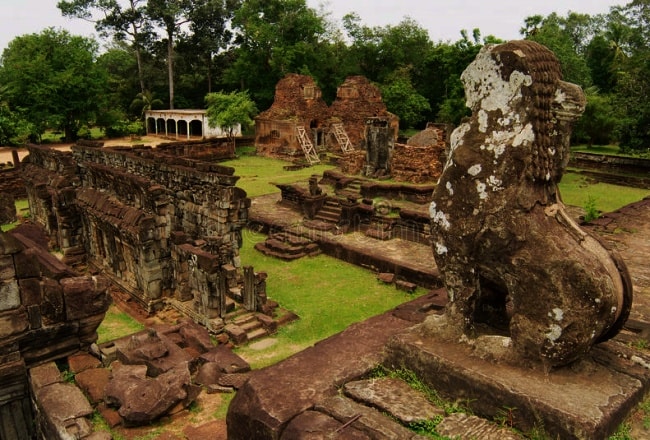
Moats and the first Naga bridges
The Bakong is a sandstone monument enclosed by two moats. The outer enclosure is delimited on each side by a laterite wall with a gopura, an entrance gate with a tower on top of it. Between the inner and outer moat are the remains of 22 brick temple buildings, most of which have collapsed. They contained statues of Vishnu, Shiva and a number of lingas.
The moat outside the inner enclosure is crossed by paved causeways, with huge seven headed Naga snakes on its sides. They are the first examples of Naga bridges, found in many of the later Angkor temples.
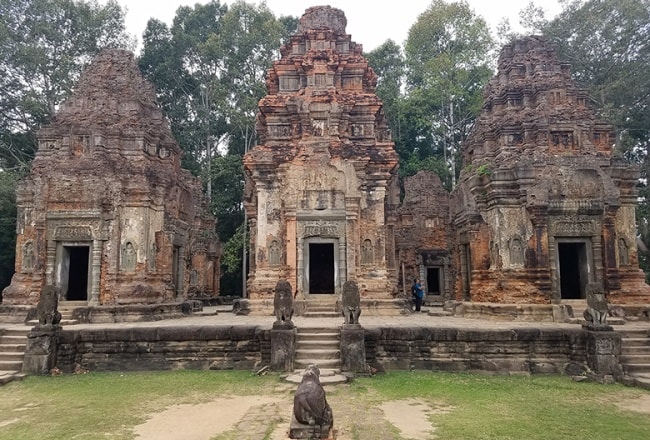
Inner enclosure
The inner enclosure contains a five stepped pyramid surrounded by eight brick towers. On top of the pyramid is a single sanctuary tower. In front of the temple on the Eastern entrance are two long halls positioned between two of the surrounding towers. At each of the four corners of the inner enclosure are brick buildings called libraries, although they probably did not contain any scriptures.
Around the pyramid are eight square brick towers, some of which have collapsed. Originally they were plastered on the outside and contained figures of dvarapalas and devatas, a few of which have survived. All towers have a real door facing the East, the other three are false doors. The door knobs on the false doors are shaped like lion heads. The lintels in the towers contain some of the finest decorations to be seen in Angkor, with very intricate depictions like Vishnu on top of Garuda, warrior figures, animals and mythological creatures like makaras and Naga snakes.
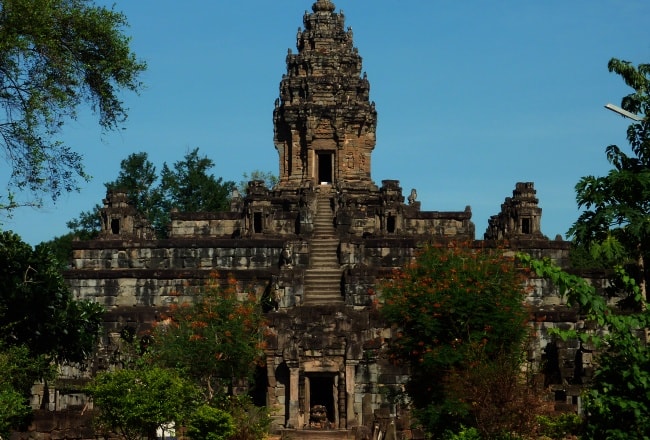
Five stepped pyramid
The five receding terraces in the inner enclosure in the shape of a stepped pyramid were built to resemble Mount Meru, the sacred mountain in Hindu mythology. The tiers of the pyramid measure 67 by 65 meters at its base and 20 by 18 meters at the fifth tier. At the center of each side is a stairway flanked on either side by guardian lions. The stairway, divided into five parts becomes narrower at each higher level to make the temple look larger than it actually is using perspective.
In front of the stairway is a large entrance gate. Opposite each of the stairs is a statue of Nandi, the sacred bull and mount of Shiva. The corners of the first three tiers contain statues of elephants. All the way around the perimeter of the fifth terrace is a frieze with bas relief sculptings, that have mostly eroded.
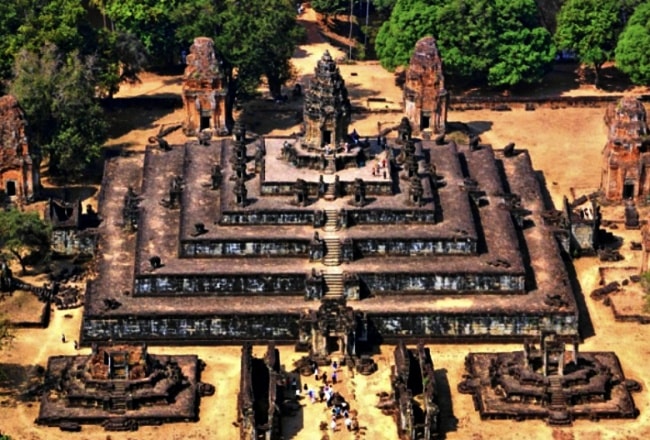
Central sanctuary
On top of the pyramid is a single central sanctuary. The tower that completely collapsed was rebuild during the late 1930’s into the early 1940’s by Maurice Glaize, a conservator of Angkor. The restoration was done to resemble the original using the method of anastylosis, which involves reconstructing the monument as near as possible to the original, using the original materials if available.
Judging from the style of the decorations, the original tower was probably build some 200 years later than the rest of the temple. Inside it is a sanctuary chamber, that probably contained the main linga. Niches in the tower contain devata figures, most of which are in a bad state of repair. The pediments of the sanctuary contain several depictions of the Hindu Gods Shiva and Vishnu.
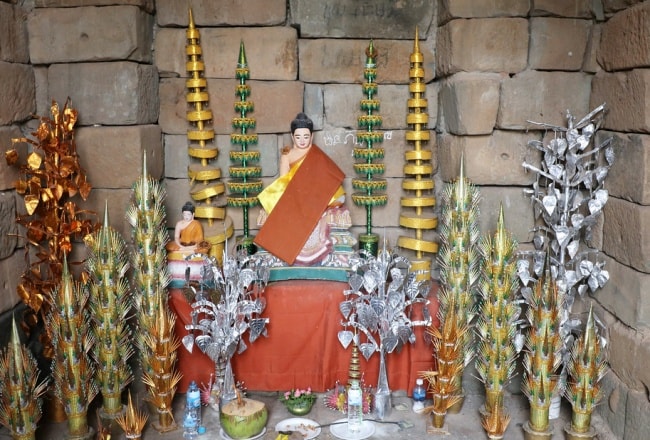


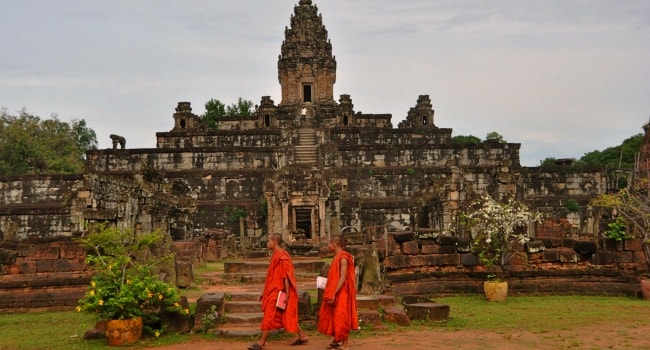

 20/01/2026
20/01/2026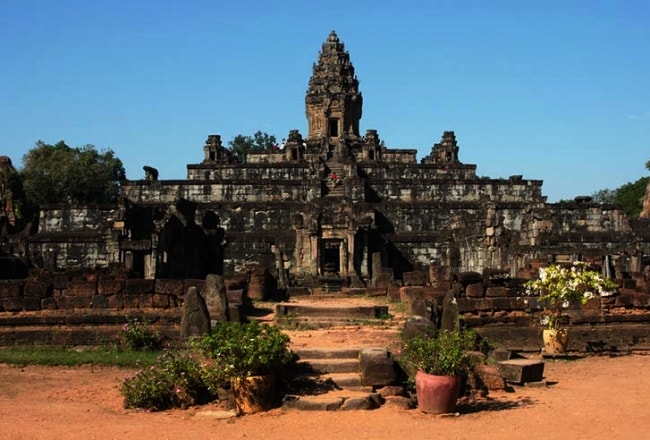
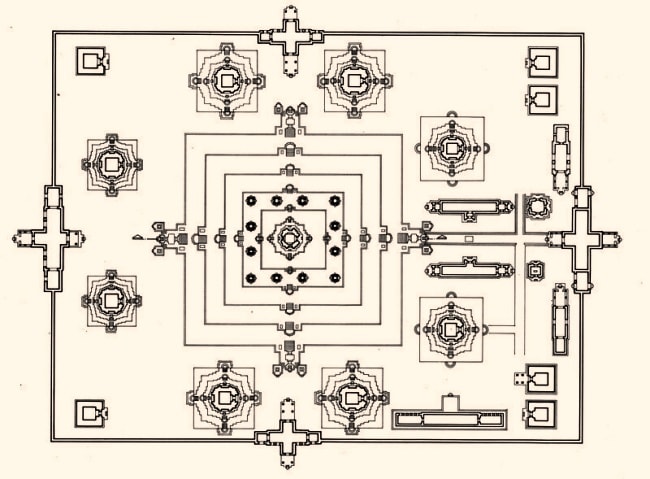





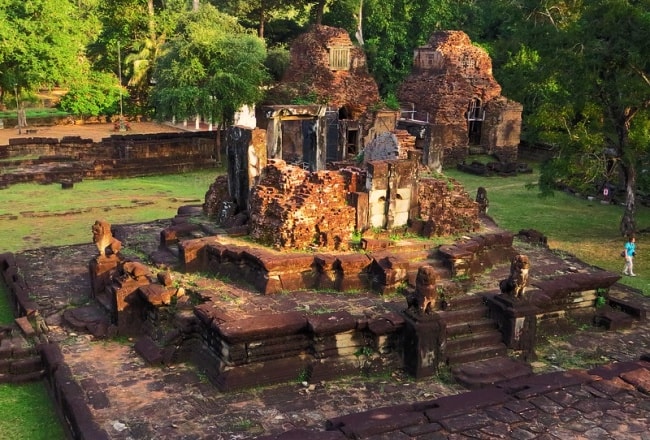
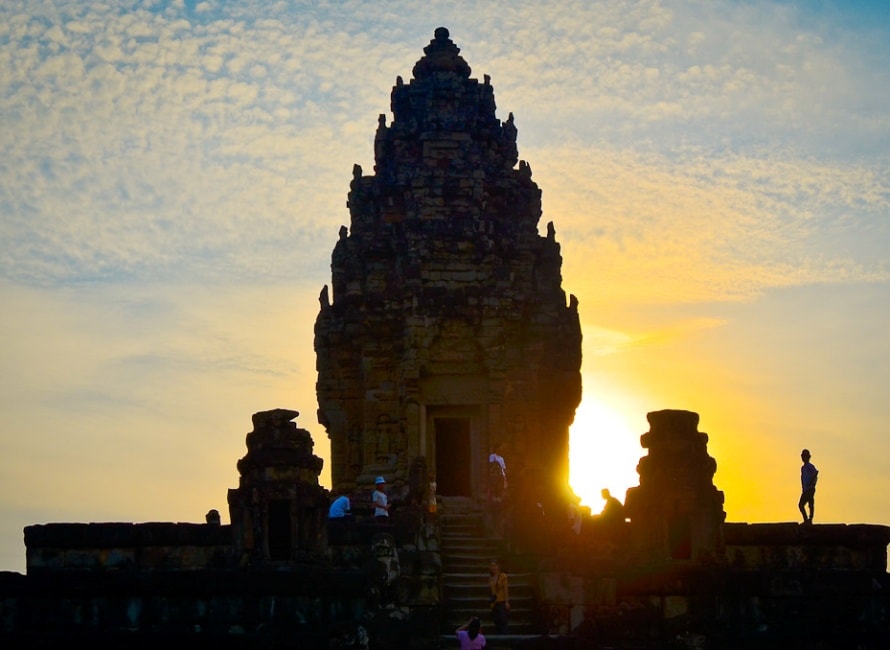
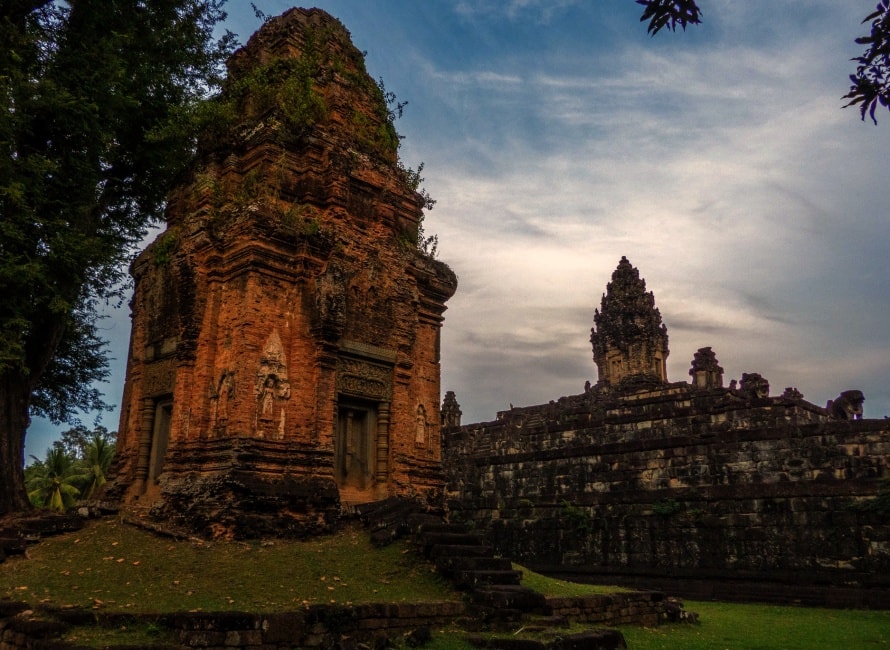
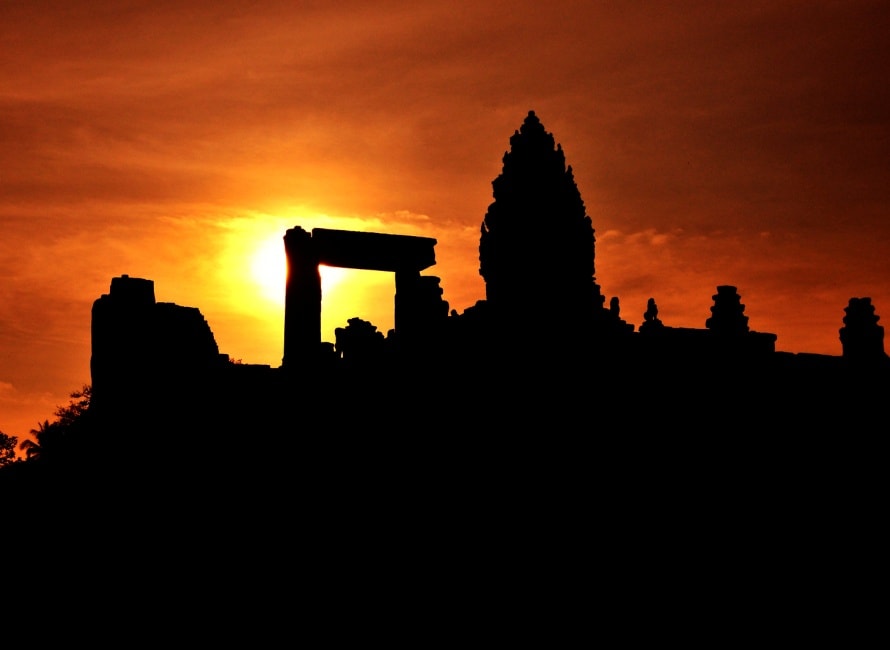
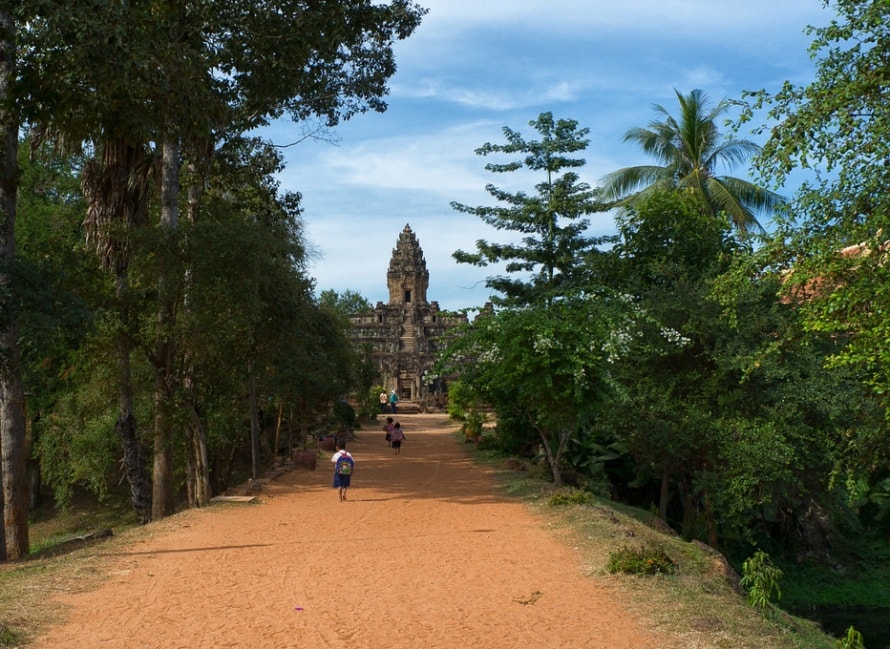
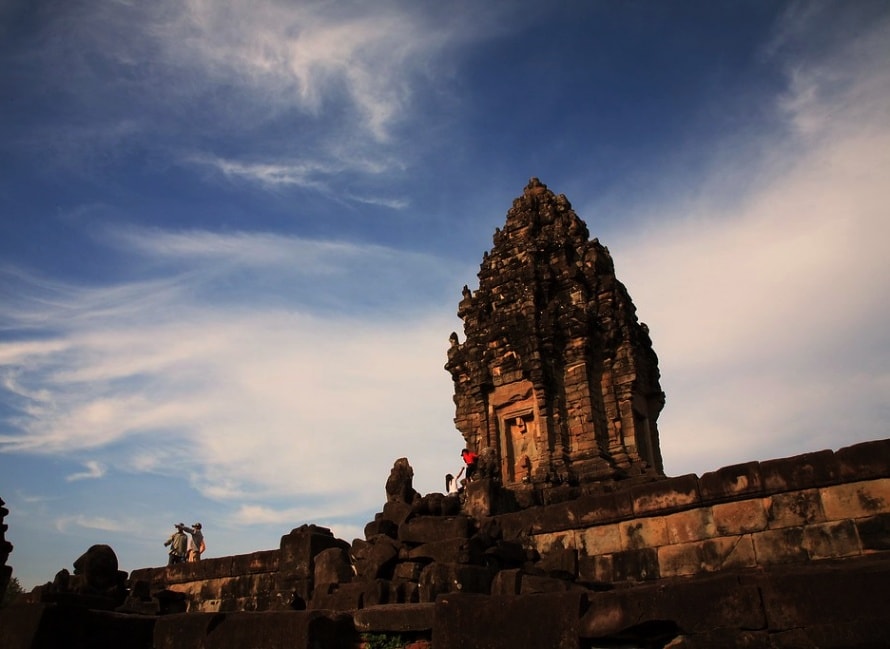
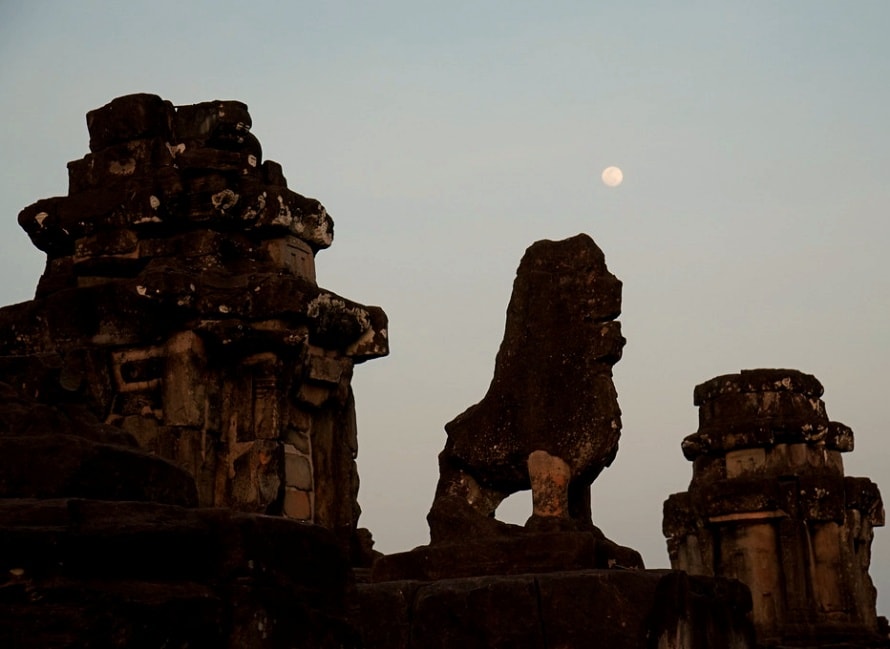
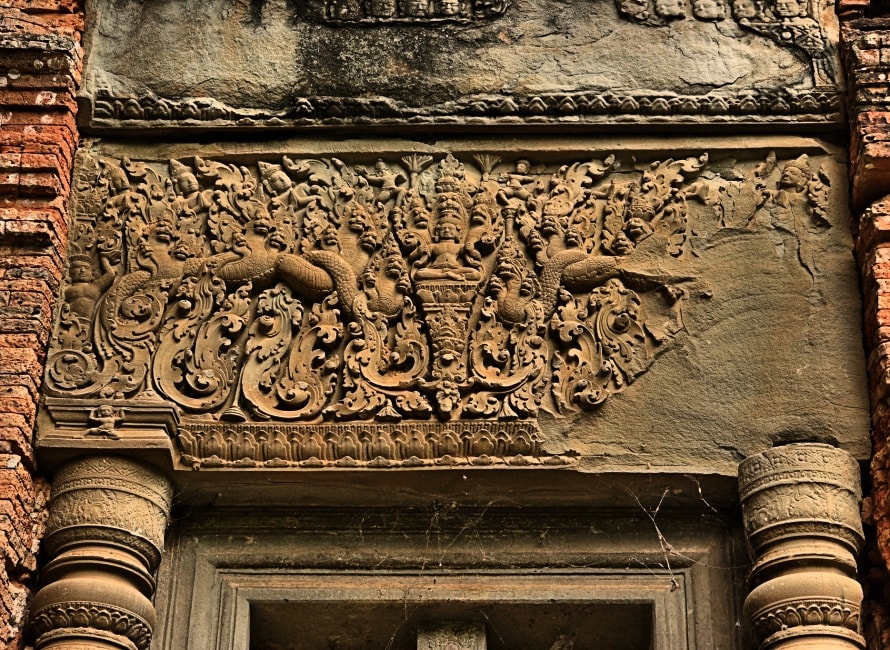
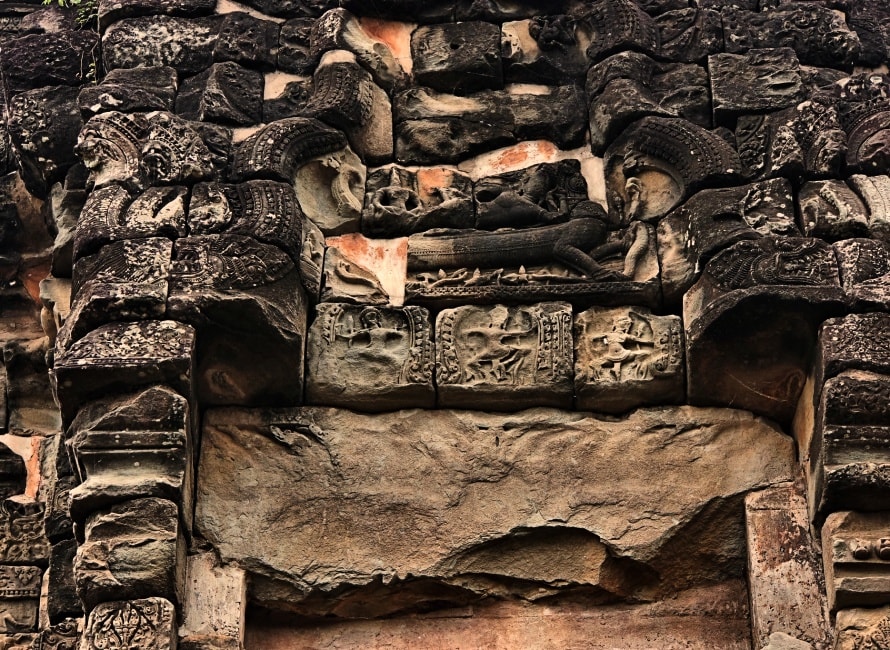
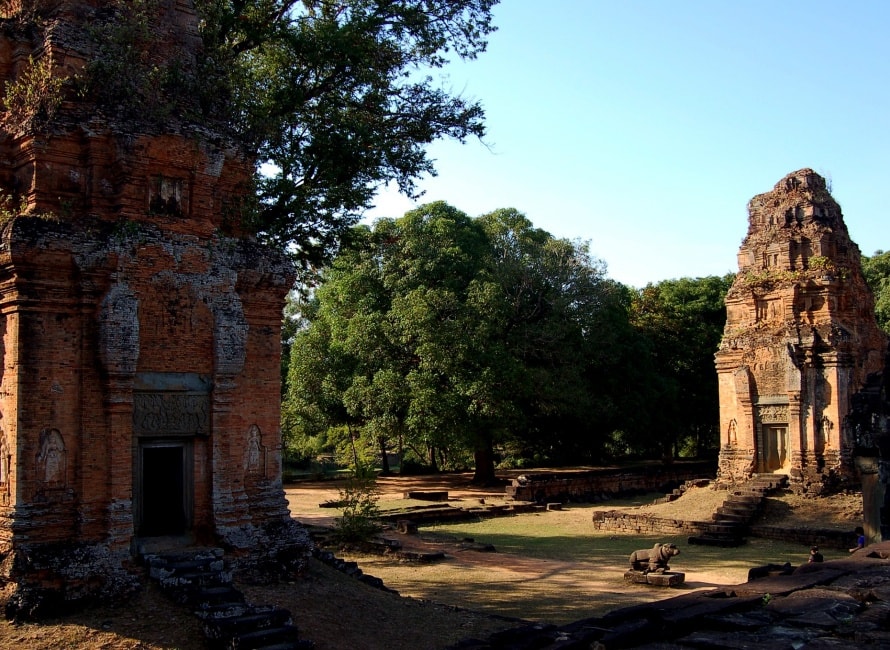
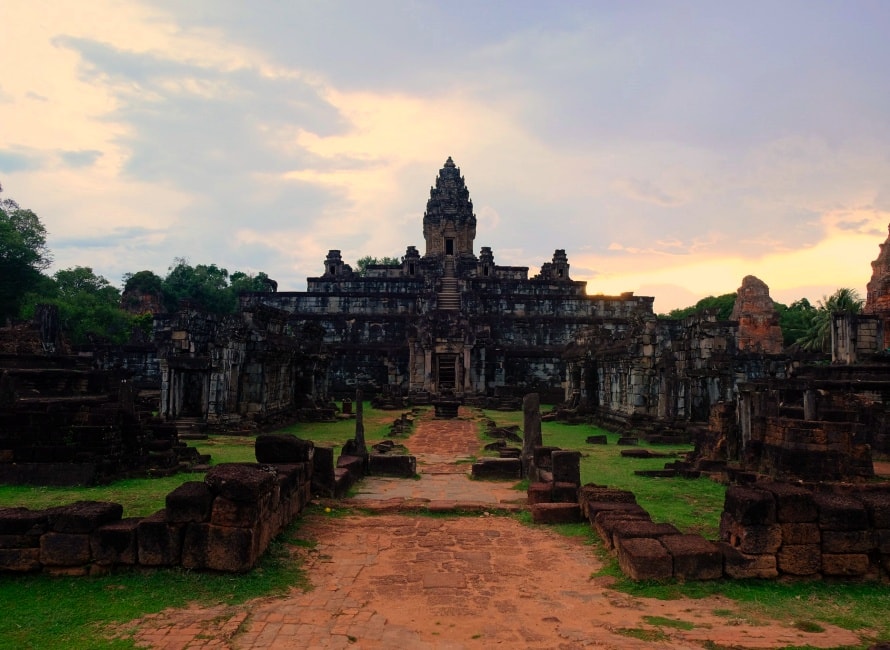

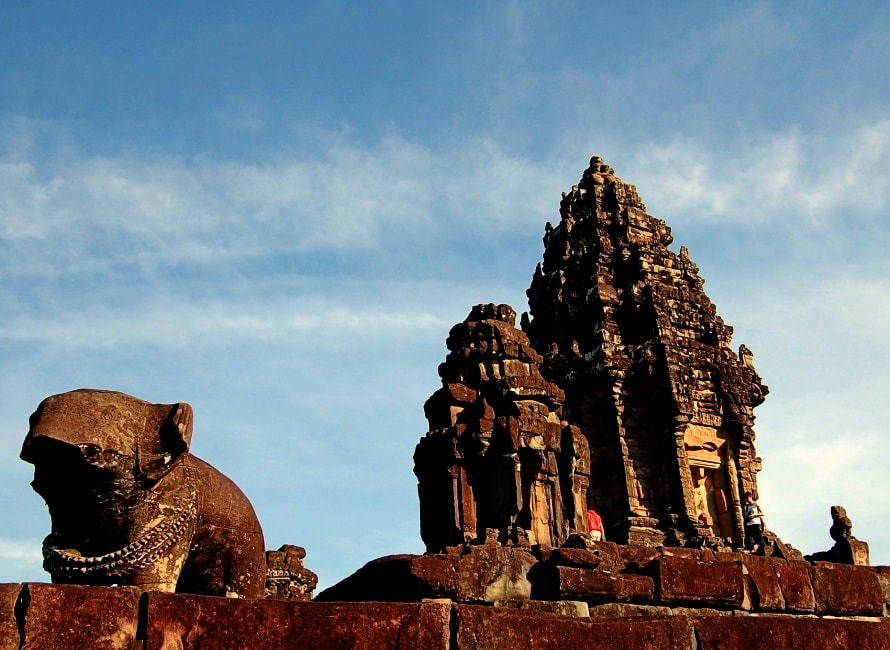



















Jolie LIEMMy name is Jolie, I am a Vietnamese girl growing up in the countryside of Hai Duong, northern Vietnam. Since a little girl, I was always dreaming of exploring the far-away lands, the unseen beauty spots of the world. My dream has been growing bigger and bigger day after day, and I do not miss a chance to make it real. After graduating from the univesity of language in Hanoi, I started the exploration with a travel agency and learning more about travel, especially responsible travel. I love experiencing the different cultures of the different lands and sharing my dream with the whole world. Hope that you love it too!